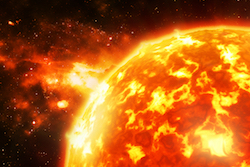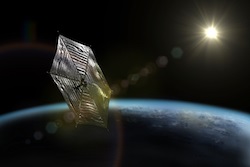Improved performance for state-of-the-art European Solar Telescope instrumentation
The sun is a star which offers a fundamental model for understanding the rest of the universe. The main mission of the European Solar Telescope (EST) is to closely observe the sun – the only star that can be studied in high resolution. But this close observation of solar processes depends on instrumentation which can deliver at the smallest scales, in the greatest detail possible. The EU-funded GREST team have worked to achieve high-spatial resolution through designs, tests and prototypes of critical instruments for future ground-based solar physics infrastructures, and especially for the European Solar Telescope (EST). As well as providing growth and diversity for existing markets, combined GREST innovations will also increase the demand for a skilled workforce in the high-technology sector. Fine tuning the instrumentation Introducing the multi-disciplinary nature of GREST, project coordinator Mr Manuel Collados reflects, “The most exciting discussions were related to how to push forward current techniques to cope with EST specifications. For example, scientists and engineers from both academia and industry, discussed how to develop bigger, faster and more efficient detectors, surpassing current options.” The work that emanated from these discussions resulted in a number of key innovations including etalons with nanometric accuracy and two Integral Field Unit (IFU) options (one based on image slicers and the other on the use of microlenses) for high resolution spatial observation. Simulation software was also developed to model the behaviour of tilted deformable mirrors (DM) for multi-conjugate adaptive optics (MCAO), mandatory to ensure that EST reaches the necessary high-spatial resolution. As solar observations require a significant evolution in sensors, the team successfully explored the feasibility of a novel charge-caching technology (based on depleted p-channel field-effect transistor – DEPFET – technology), designing, building and testing a prototype. This technique potentially lays the foundation for the next-generation science camera for high precision spectro-polarimetry. Based on the results, a concept for a science-ready polarimetric camera and an implementation roadmap were outlined. Additionally, a prototype of a large-format (4k x 4k) fast-readout, low-noise, back-side illuminated camera, based on the scientific Complementary Metal Oxide Semiconductor (sCMOS) technology was achieved, providing in-situ storage for up to four independent images. Evaluation showed that the camera prototype met EST specifications - something currently unavailable in any device, commercial or otherwise. Alongside the advent of new generation telescopes and instruments, and especially of modern, large-format detectors, comes the necessity for large polarisation modulators. Within GREST, a number of large-format liquid-crystal variable retarders were successfully fabricated and tested based on various approaches including Anti-Parallel Aligned Nematic, Parallel Aligned Nematic and ferroelectric cells. Understanding the impact of solar activity on Earth Solar magnetic activity results in terrestrial changes, potentially affecting millions of people, both short and long term. Being able to better understand the link between solar output and the Earth’s climate, to predict space disturbances induced by the Sun, could result in more effective mitigation. By peering into the physical mechanisms of the solar atmosphere, in unprecedented detail, EST will solve long-standing questions such as: the structure and evolution of solar magnetic fields, including sunspots; the emergence of magnetic fields through the solar surface; the dynamics and heating of the chromosphere; the trigger mechanism of flares and the magnetic coupling of the solar atmosphere. As Mr Collados says, “GREST developments offer a significant step forward to making the promise of EST a reality. Not only has it provided an excellent opportunity to develop new applications from breakthrough technologies, but it has increased the cooperation between academia and industry already resulting in new devices.” Besides being of use for solar observations, the large format detector technologies alone, are expected to benefit a wider range of applications which require high-resolution astronomical observations, such as Near Earth Object detection and Pulsar studies and to open new markets in Transmission Electron Microscopy (TEM), Protein Crystallography and X-ray Tomography. To finalise the work, the team are continuing to research, manufacture, test, refine and validate the various technologies, both in the laboratory and in situ.
Keywords
GREST, plasma physics, sun, telescope, solar, star, magnetic fields, sunspots, high-spatial resolution, detectors, sensors, atmosphere







